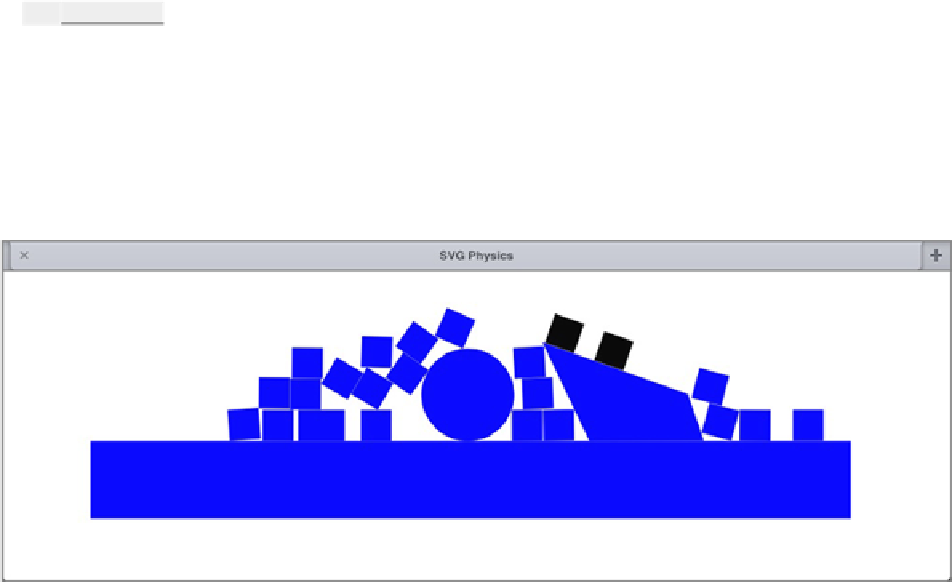HTML and CSS Reference
In-Depth Information
var touch = e.originalEvent.changedTouches[0];
if(touch.target.sprite) {
touch.target.sprite.destroy();
} else {
var point = stage.browserToWorld(touch.pageX,touch.pageY);
var box = stage.insert(new Q.Sprite({
x: point.x, y: point.y, w: 20, h: 20
}));
box.add("physics");
box.bind("contact",function(sprite) {
sprite.set({fill:"blue"});
});
}
e.preventDefault();
});
The first block also needs to be updated to type
static
so that it can act as a platform for the other objects.
Finally, the box elements added when you touch on an empty part of the screen add in a listener to the
con-
tact
event to turn any object they touch blue. The result is shown in
Figure 14-4
.
Figure 14-4:
Box2D Physics applied to SVG.
Creating a Cannon Shooter
With physics and SVG in Quintus, you now have all the pieces you need to build a simple physics-based, knock-
things-down game. (Box2D, after all, is the 2-D physics engine that powered
Angry Birds
.)
The fun part of physics-based gameplay is that as a developer you don't need to do much to get the basic
functionality working: The physics engine handles a lot of it for you. The flip side of this, however, is that the
physics-based games require a lot of parameter tweaking to be fun and work well.



